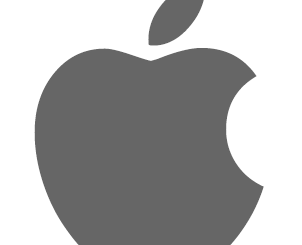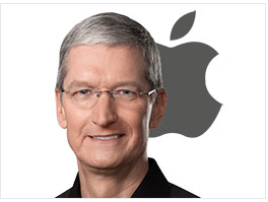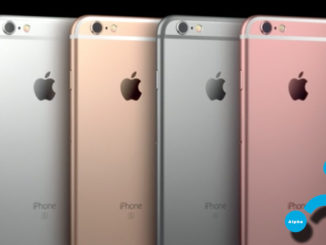Apple gave its first sales warning in 15 years this week, making world news and raising a number of questions. Has Apple passed its peak? If so, and even more important, what’s caused this? CEO Tim Cook pointed to a number of external factors that contributed to the lower-than-expected sales in the December quarter. All very plausible, but Cook and Apple can better look to themselves for an explanation.
Not the first drop in sales, but the most unexpected
Apple’s warning means a 5-9 percent reduction in its sales outlook for the quarter, to revenues of USD 84 billion rather than the USD 89-93 billion forecast earlier by the company. The actual results will be reported on 29 January, and if in line with the new estimate, that means Apple’s revenues for the quarter fell by around 5 percent from the year-earlier period.
This is not the first time Apple has reported lower revenues. Since 2009 the company has reported an annual drop in quarterly sales four times. In 2016, revenues were down three quarters in a row, by 12.8, 14.6 and 9 percent. The difference this time is that Apple previously predicted the lower revenues in its quarterly guidance. This time the company did not see it coming, and the surprise for everyone is big news. Despite the lower sales, it should be noted that Apple is still expected to report record results in a number of countries, such as the Netherlands, US and Korea.
Panic time?
Cook’s letter to shareholders and a subsequent interview with CNBC show the CEO doing his best to point to as many external factors as possible to explain the lower-than-expected revenues. From the trade war between the US and China and the slowdown in the Chinese economy to the end of handset subsidies and cheap replacement batteries for older iPhones.
These factors of course all played a role. There is also the anti-Apple sentiment in China, where Huawei is getting a boost in response to its international treatment. Since the arrest of Huawei’s CFO in Canada on a US warrant and extradition request, Chinese consumers and businesses have been encouraged to buy Huawei products, in order to support the local company, according to local media reports.
As usual, Cook appears calm and calculated in the interview, suggesting after 15 years of success, Apple no longer understands disappointment. However, the company should take the opportunity to have a good look at itself and understand the meaning of this setback for its strategy.
Failing iPhone price strategy?
A good look at its business could show Apple that its iPhone pricing strategy may not be working. Cook’s only allusion to this was that Apple was looking at offering financing plans to help customers buy new iPhones, as it already does in certain markets for Mac computers. Talking about a new iPhone for USD 20-30 per month though means a very long contract to buy even the cheapest model, the iPhone XR at USD 749. Cook did not mention any special conditions, such as paying a portion upfront or longer contract periods. We will need to hear more about how Apple plans to sell this, but it suggests that Cupertino is starting to realise that a phone costing over USD 1,000 is not in everyone’s reach.
As long as profits keep growing . . .
Apple already announced at its last quarterly report that it would no longer report unit sales of iPhones. In that quarter, Apple reported 46.89 million iPhones sold for total revenues of USD 37.19 billion. A year earlier, the company sold 46.68 million iPhones for total revenues of USD 28.85 billion. That’s USD 8 billion more revenues for an increase of less than 0.5 percent in unit sales. This clearly had a positive impact on Apple’s profit margin.
And as long as the profits keep growing, then shareholders can deal with the lower revenues. Cook’s comments in the CNBC interview suggest that Apple has knowingly chosen this strategy. Asked why Apple will no longer report unit sales, Cook said the significant difference in price between the cheapest and most expensive iPhone models make the figures less relevant. Instead, the company will provide the market and shareholders with more details on profit margins.
No one can shake their head at Apple for wanting to make more profit – that’s the aim of any commercial business. The question is how long consumers will continue to accept the increase in prices.
The fact is Huawei and Samsung are adopting similar strategies. They have also raised the price of their top smartphones to USD 1,000 or more. The difference is that Huawei and Samsung also have cheaper models. These alternatives may offer somewhat less performance than the most expensive models, but often score better in terms of price-quality ratios.

Price-quality difference too big
And that’s where it’s all going wrong with the iPhone. The cost of the top iPhone model rose to EUR 1,659 with the launch of the XS Max last year. As the above graph shows, an iPhone could still be bought for EUR 700-800 a few years ago, while the cheaper models such as the iPhone SE were as little as EUR 400. These were not the cheapest phones on the market, but less expensive models meant a significant drop in quality and functionality.
Now a high-end iPhone costs well above EUR 1,000. The cheapest new iPhone is EUR 859, while the older iPhone 7 still offered by Apple is EUR 529. The Nokia 7 Plus, named by many tech sites as the best affordable smartphone in 2018, costs EUR 349. Of course the Nokia comes with a bit lower quality screen and camera, but the battery is just as good, and the difference in quality and functionality is not worth EUR 800 to 1,300.
A family of four can buy four of the Nokia 7 Plus for the cost of one iPhone XS and still have money left over. That is a significant difference in price, and it is only a matter of time before more consumers start doing the math – also when it comes to flagships from Huawei and Samsung. The latter at least have the advantage of offering cheaper alternatives, in the same price class as the Nokia 7 Plus.
Lack of innovation
Not just price, but quality also is a factor. The first iPhone was revolutionary. No, it wasn’t the first smart mobile phone and not even the first with a touch screen. Nokia, (Sony) Ericsson, Palm, HP and Motorola were all ahead of Apple, but not successful. The iPhone was the first smartphone that could be operated with a single finger, based on its specially designed operating system. The killer app ended up being the apps in the App Store, and the iPhone changed how mobile phones were used.
Apple has enjoyed a number of years building on its initial success and innovation of the first iPhone. The Android OS followed in 2008 and it took the rest of the industry several years to catch up.
However, more recently Apple seems to have lost its innovation advantage. The latest features such as dual or triple cameras and in-screen fingerprint scanners and cameras are not available on the iPhone. And while Apple may have a much more loyal fan base than for example HTC, the Taiwanese smartphone maker knows as good as anyone where a lack of innovation can lead.
Apple still has the advantage of its closed ecosystem built over the past ten years and still growing strongly. Furthermore, iOS is still the only serious alternative to leaving the entire smartphone market to Android.
Can Apple see the light in time?
Apple needs to realise what’s happening though before another (Chinese) player like Huawei or perhaps even Nokia passes its by in market share. The company’s sales warning is not a sign of the company’s imminent downfall and end of the iPhone era. But history shows that it can all turn bad quickly – just ask Nokia, Motorola, BlackBerry and HTC.
–
telecompaper




